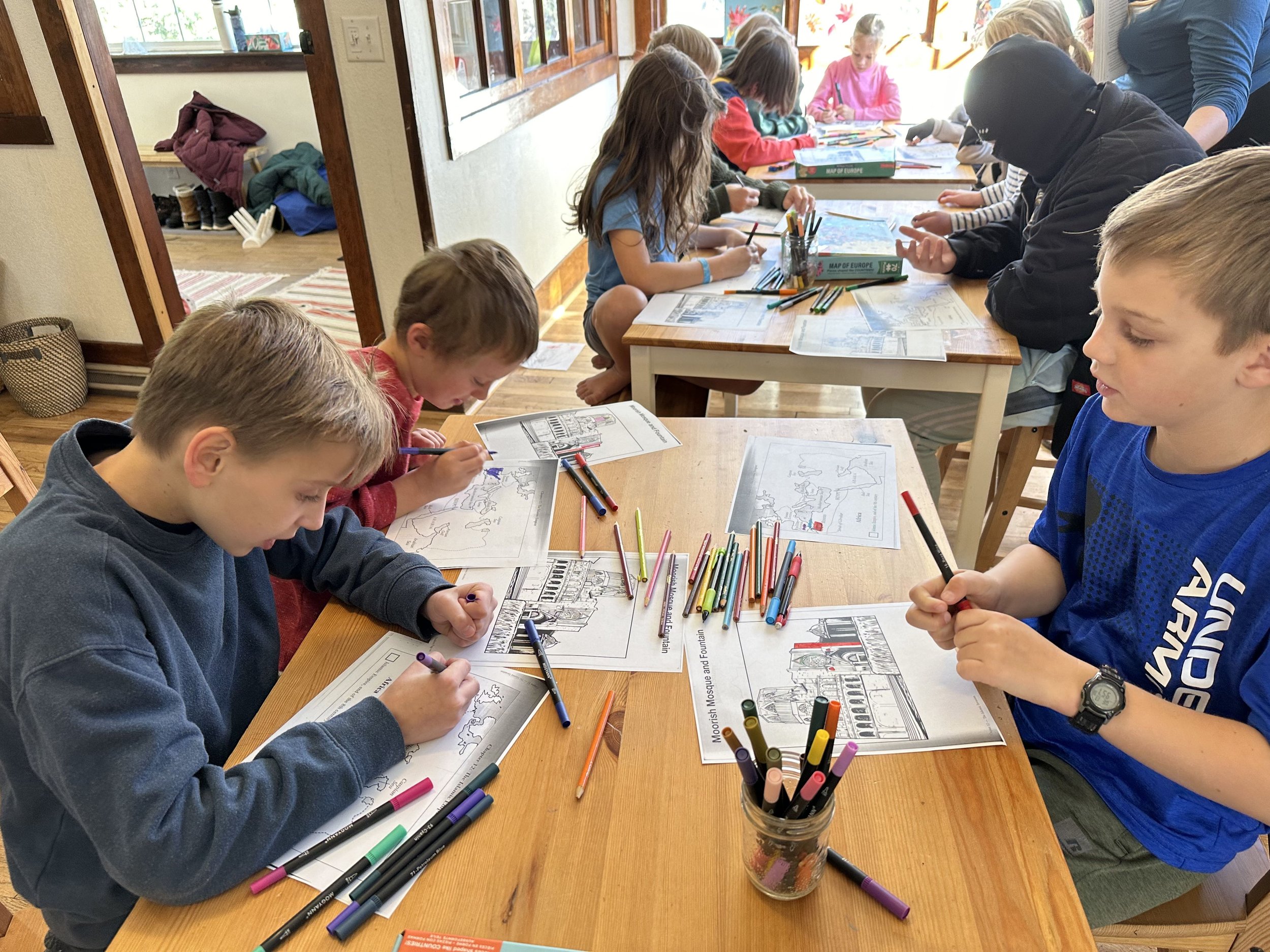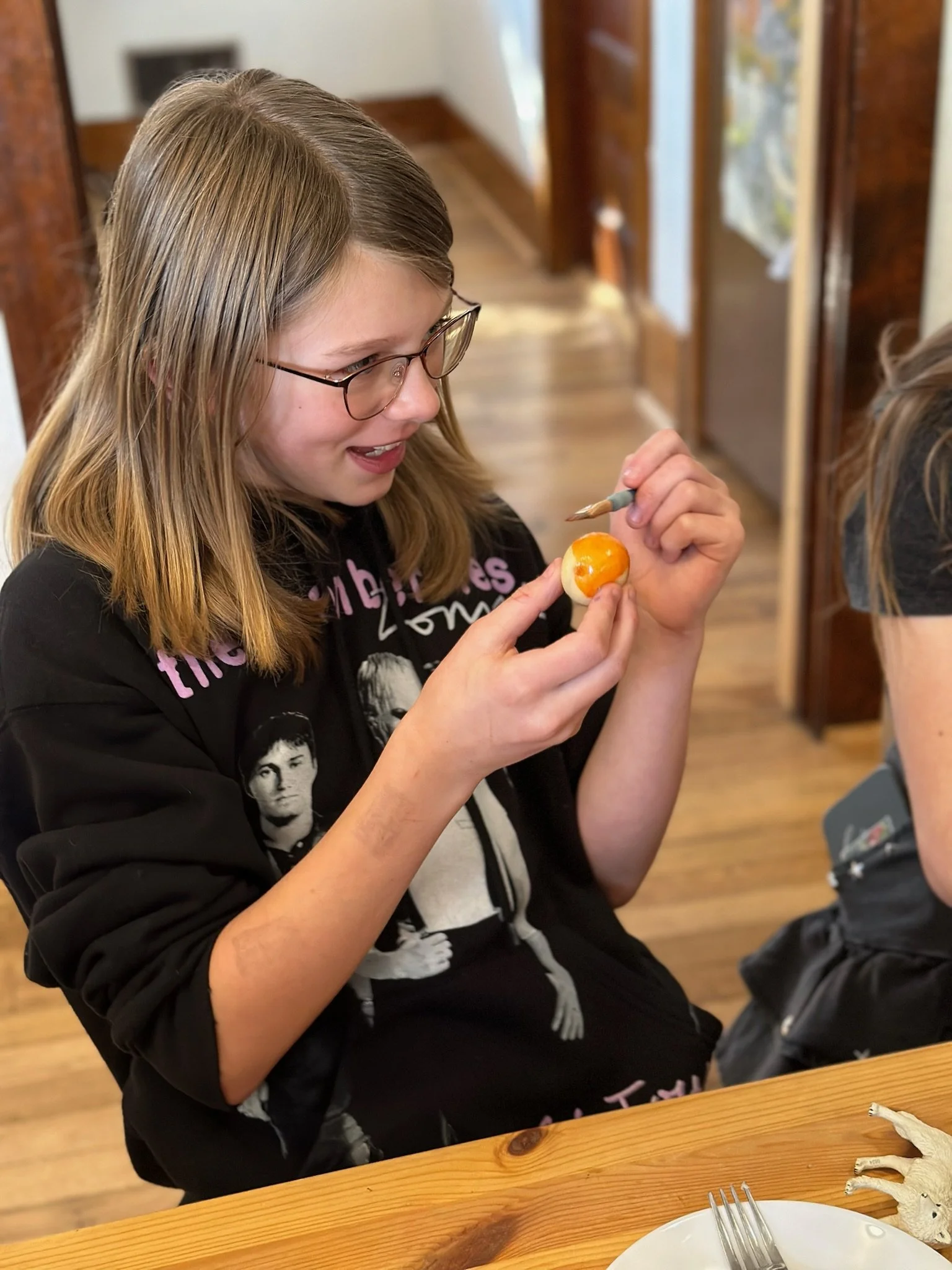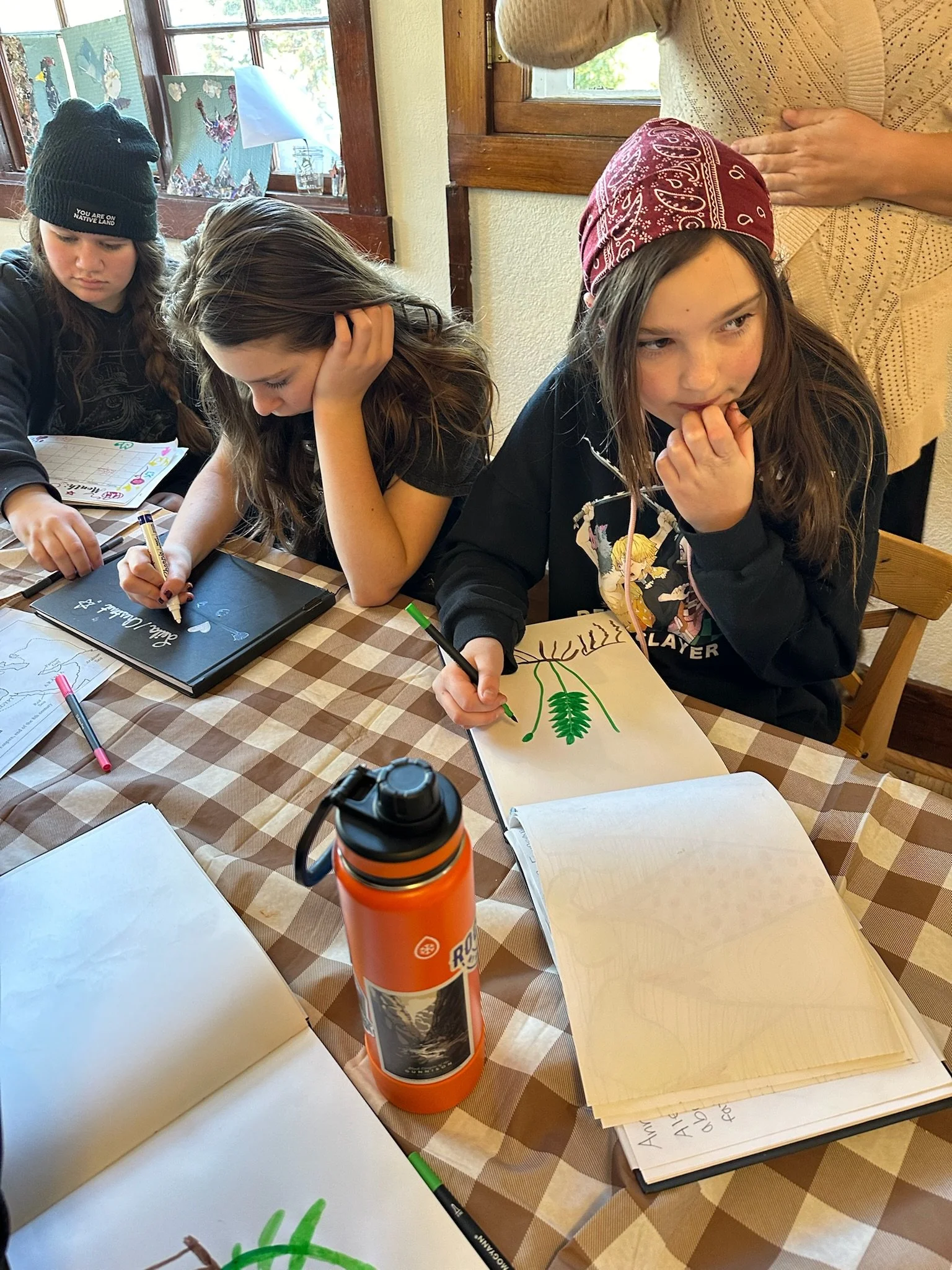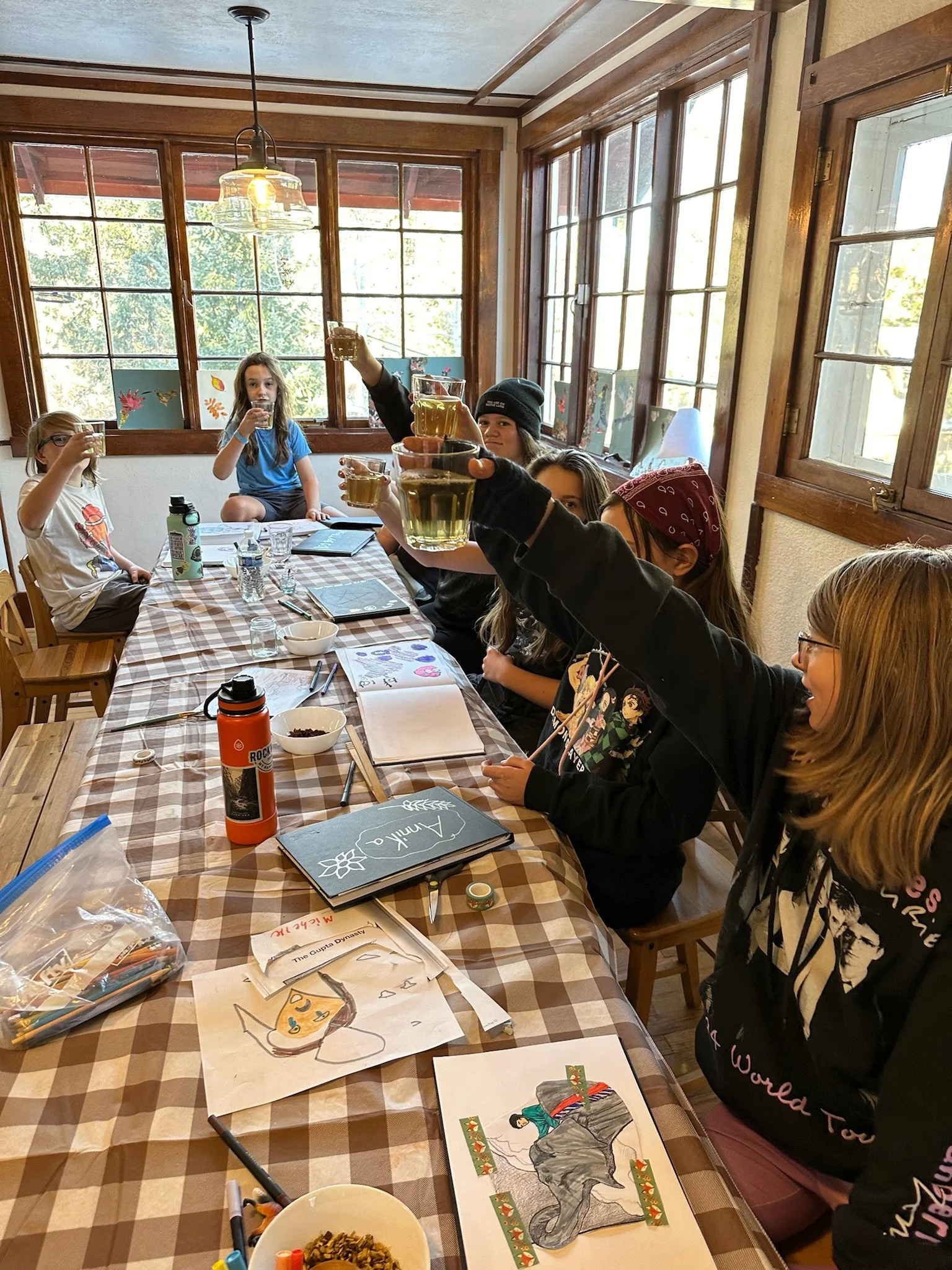
Drawing Glycyrrhiza glabra and a root beer toast!
Frosty Mornings, Marzipan Oranges, and Root Beer: A Journey Through History, Science, and Snow:
The morning began in a swirl of frosty air and rosy cheeks. We dove straight into our history, geography, and timeline songs, the kids belted out the verses with confidence. They’ve not only mastered 1,000 years of history but are now more confidently leading the American Sign Language signs that accompany the songs.
Our history lesson took us to Tangier and the Rock of Gibraltar, where Amy told the story of Tariq ibn Ziyad and his daring invasion of Visigoth Spain. The kids sat wide-eyed learning how Tariq gave his troops a seemingly crazy order to burn the 1,000 ships they had just sailed to Spain on because there was no going back. The discussion of Berber ingenuity and determination set the stage for a hands-on, and (debatably delicious) project - making marzipan oranges.
Why marzipan oranges? Because the Berbers brought more than military strategy to Spain; they also brought plants like almonds, cherries, and oranges. There’s something magical about shaping almond paste into tiny, vibrant citrus fruits. The kids focused on sculpting and painting their creations, their laughter punctuated by exclamations like, “Can I really eat this?” And, “Does this look like an orange or a potato?” History is better when it’s edible, we’ve decided.
Afterward, we bundled up and headed to the park for recess. Snow-covered slides and frosty monkey bars might deter the Visigoths, but not this group. They barreled into the snow with a determination that could rival Tariq’s troops, proving that free play doesn’t. notice the weather.
Back in the classroom, it was time for science, where I presented a lesson on the licorice plant. We learned its Latin name, Glycyrrhiza glabra, and explained its meaning—sweet root. We learned that licorice is an adaptogen, a miraculous substance that helps the body handle stress.
The highlight, though, was creating our own root beer! Imagine a group of children, noses inches from jars, sniffing combinations of spices and roots like Medieval apothecaries. We carefully measured ingredients, stirred with precision, and when the root beer was ready, raised our hands in a viking toast, “Til Valhallar, Skol!” In between sips, giggles, and a few gags (homemade root beer is not for everyone) we drew pictures of the licorice plant and labeled our creations in the main lesson books, the pages filling with careful drawings and the occasional smudge of sticky root beer.
By the end of the day, the room smelled like licorice and marzipan!
Teaching, like history, can be messy, sticky, and fun. Today, those moments stretched from the windswept Rock of Gibraltar to a snowy playground, from ancient adaptogens to tiny hands shaping marzipan. And if that isn’t the kind of day worth savoring, I don’t know what is.


